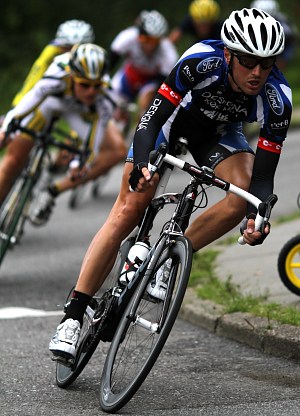If you know me, you know I’m a big believer in structured training. I’ve spent years developing detailed training programs, and I’ll be the first to tell you that there’s incredible value in following a system.
Structure is what drives consistent progress—whether you’re working to increase your power output, improve your endurance, or hit a peak at just the right time for race day.
There’s a clear satisfaction in watching the numbers move in the right direction, knowing that every interval, every planned effort, has its purpose.
But, as much as I love structure (and I really do), there’s another side of cycling that’s just as important—spontaneity.
You see, cycling isn’t just about chasing data and hitting targets.
It’s also about having fun, enjoying the ride, and sometimes just letting things unfold as they come. That element of unpredictability can not only make training more enjoyable but can also take your performance to a new level.
In this post, I want to share how balancing structured training with spontaneous, unplanned riding can make you a better cyclist. The key is finding the balance that works for you—structured enough to make progress but flexible enough to keep the joy and freedom alive.
Why Structure is So Important
I’ll admit it—I’m addicted to structure. There’s something deeply satisfying about a well-planned training program that hits all the right notes.
When you follow a structured plan, you’re not leaving things to chance. You’re systematically building fitness, fine-tuning your strengths, and improving weaknesses.
It’s the roadmap that takes you from where you are to where you want to be.
Whether it’s a set of high-intensity intervals to increase your VO2 max or a progressive endurance ride to build stamina, structure gives you direction. It’s like having a compass that keeps you focused, ensuring that every pedal stroke gets you closer to your goal.
But here’s the thing: too much structure can sometimes take the fun out of the sport. When every ride becomes about hitting exact numbers, it’s easy to forget why you started cycling in the first place—the sheer joy of being on the bike.
And trust me, when the fun starts to fade, so does your motivation.

The Value of Spontaneity
This is where spontaneity comes in. While structure builds the foundation, spontaneity keeps the fire alive. The freedom to occasionally ditch the plan, follow your instincts, and enjoy the ride can do wonders for your mental and physical freshness.
1. Race-Day Adaptability
Races are unpredictable by nature. You can plan all you want, but once the race starts, anything can happen—unexpected attacks, surges in pace, or even a sudden change in weather. The ability to adapt on the fly is a crucial skill in cycling, and that’s something structured training alone can’t always prepare you for.
This is where spontaneous rides come into play. By embracing unstructured efforts—whether it’s chasing down a friend during a group ride or pushing hard on a climb just because you feel good—you’re training yourself to react quickly to changing dynamics.
These rides simulate the unpredictability of racing, giving you the flexibility to handle the chaos of race day with confidence.
2. Keeping the Fun Alive
Let’s be honest—sometimes, we all need to remember to just have fun on the bike. When you’re constantly following a strict plan, it’s easy to lose that sense of freedom.
Spontaneous rides give you the chance to reconnect with the pure joy of cycling. Head out with no agenda, explore new routes, or ride with friends just for the sake of it.
I’ve seen firsthand how these unplanned rides can recharge your motivation. It’s liberating to leave the power meter at home (or at least ignore it for a while) and just ride by feel. If you end up in a friendly sprint with your buddies and snag a win, what’s not to love?
Those moments of spontaneity bring back the competitive spark and remind you why you love racing in the first place.
3. Mental Toughness
There’s also a mental edge to riding spontaneously. When you step outside of your carefully crafted plan and push yourself in unpredictable situations, you’re building mental resilience. ‘
Whether it’s hammering up an unexpected hill or responding to an impromptu attack during a group ride, you’re training your mind to handle discomfort on the fly—just like you’ll need to do in a race.
By blending structured training with these spontaneous efforts, you’re not only preparing your body but also toughening your mind for the moments when things don’t go as planned. And trust me, those moments will come!

How to Strike the Right Balance
The good news is that you don’t have to choose between structure and spontaneity. You can have the best of both worlds by finding a balance that works for you. Here’s how to do it:
1. Schedule “Unstructured” Days
Yes, I know it sounds a little contradictory to schedule spontaneity, but hear me out. By building in days where you give yourself permission to ditch the plan, you create room for spontaneity without disrupting your overall training program.
On these days, ride with no fixed goal—just enjoy the experience. If you feel like pushing hard, do it. If you want to take it easy and cruise, that’s fine too. These days help you mentally reset while keeping your body moving.
2. Mix it Up in Group Rides
Group rides are the perfect setting for adding some spontaneity to your training. The natural dynamics of a group—attacks, surges, and sprints—force you to respond to what’s happening around you.
Not only do you get the social benefit of riding with friends, but you also mimic race conditions in a fun, low-pressure way. Let the group push you, and don’t be afraid to join in the friendly competition.
3. Unplanned Efforts During Long Rides
Even on your long, structured endurance rides, there’s room for spontaneity. If you’re feeling good, throw in an unplanned sprint or hit a climb harder than usual.
These unstructured efforts can add a layer of intensity that breaks up the monotony of long rides and gives your body a new challenge.
4. Explore New Terrain
If you want to shake things up even more, try exploring new routes or challenging terrain.
Hilly roads, winding trails, or mixed surfaces introduce natural unpredictability into your ride. These routes force you to adapt to changes in pace, effort, and terrain—skills that will transfer directly to race day.
Final Thoughts: The Joy of Cycling
At the end of the day, cycling is about more than just numbers, watts, and intervals. It’s about the freedom of the open road, the thrill of a friendly race with your buddies, and the satisfaction of pushing your limits.
Structure will get you far, but spontaneity will keep you loving the ride.
So, the next time you feel bogged down by your training plan, remember:
it’s okay to mix things up.
Embrace the moments of spontaneity, have fun with your friends, and enjoy the ride. In the long run, balancing both worlds will make you a stronger, more adaptable cyclist—and, more importantly, you’ll never lose sight of why you love to ride.
If you have any considerations or questions, please leave a comment below.
